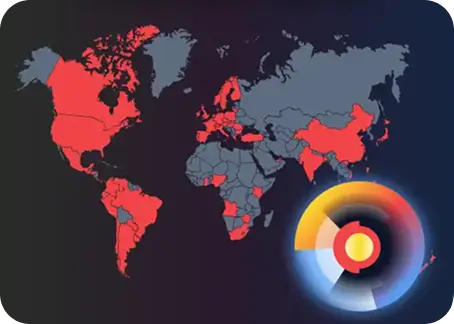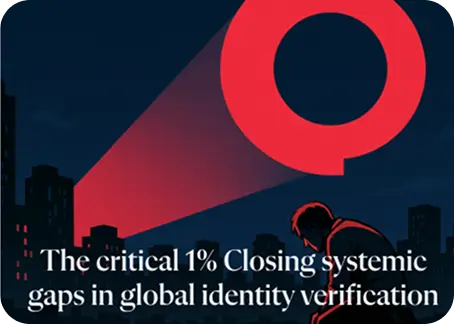Mastering Japan’s Identity Verification: A Merchant's Guide with Shufti
Select an additional country

Thank you for submitting
We have sent you an email to download our Top 10 Most Difficult Countries for Identity Verification Report.
Got it Resend EmailUnderstanding the Challenges of Japanese Identity Documents
Effective identity verification in Japan requires a comprehensive approach due to the distinct characteristics and complexities of Japanese identity documents. Shufti’s OCR and verification technology is specifically designed to address these challenges and provide accurate, efficient, and reliable identity verification solutions.
In this section, we will discuss the various challenges associated with verifying Japanese identity documents, highlighting how our technology overcomes these hurdles to ensure seamless verification.
1. Linguistic Diversity
Japanese writing comprises three scripts: hiragana, katakana, and kanji. Here's a detailed overview of each:
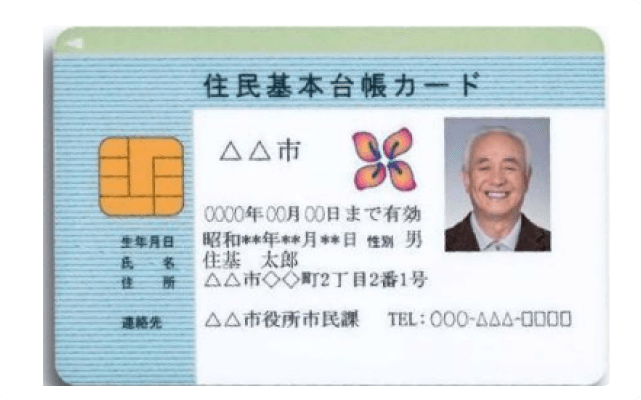
Hiragana (ひらがな)
This syllabic script consists of 46 basic characters and is used primarily for native Japanese words and grammatical functions. Hiragana is often the first script taught to learners of Japanese and serves as the foundation for learning other scripts.
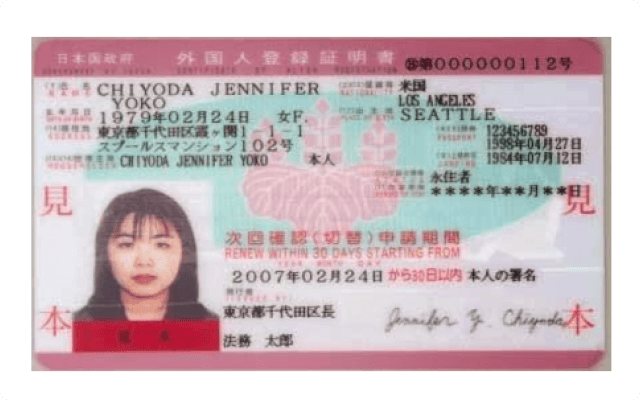
Katakana (カタカナ)
Like hiragana, katakana is a syllabic script with the same set of sounds but is used for foreign words, technical and scientific terms, as well as for emphasis, similar to italics in English. It is more angular in appearance compared to the cursive style of hiragana.
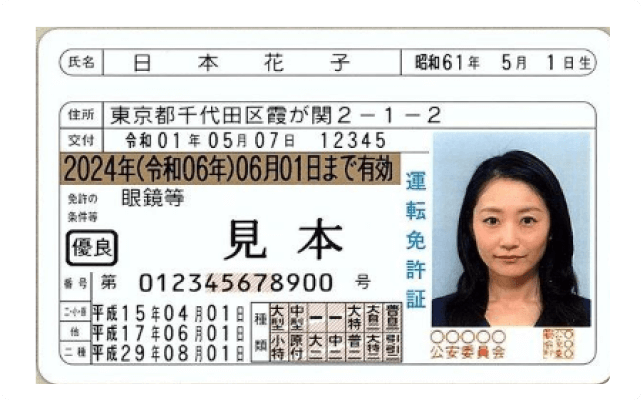
Kanji (漢字)
These are logographic characters that originated from Chinese. Kanji represents words or ideas, and there are thousands of them in use, though about 2,000 are considered essential for daily reading and writing in Japanese (known as Jōyō Kanji). Kanji characters can have multiple readings depending on their use in context (Japanese Professor).
Documents such as Japanese national IDs, passports, and driver's licenses incorporate all three scripts, making OCR processing particularly challenging. Advanced OCR systems must recognize complex kanji characters and accurately process mixed-script documents.
2. Complex Diacritic Symbols
Hiragana and katakana may include diacritic marks — dakuten and handakuten — that modify syllables. A common challenge is distinguishing between similar-looking kanji characters that have vastly different meanings. For instance, the kanji for "tree" (木) and "book" (本) are visually similar, but their context within a name or address can change the interpretation entirely.
3. No Spaces Between Words
Japanese texts typically do not have spaces between words, which can complicate data extraction. Names on documents are often compact and may not include spaces, requiring context-aware OCR technology to distinguish between given names and surnames. Moreover, some documents include both Japanese and Romanized (Latin alphabet) versions of names, which becomes challenging for OCR systems.
4. Japanese Era Calendar
Japan uses the Japanese era calendar for everyday dates, which begins with the reign of the current Emperor. Documents are categorized by the Imperial eras:
Showa(1926 – 1989)
Heisei(1989 – 2019)
Reiwa(2019 – current) (Reiwa)
Dates are often written in kanji, such as 平成3 for Heisei 3, with occasional Latin abbreviations like H3. The era calendar's structure means that certain years will not appear in documents (e.g., Showa 65 or Heisei 32), and understanding this system is crucial for accurate date verification.
Typically, Japanese dates are written in the following format:
Era Name - Year - Month - Day
For example:
平成 25 年 12 月 25 日 (Heisei 25-nen 12-gatsu 25-nichi) = December 25, 2013
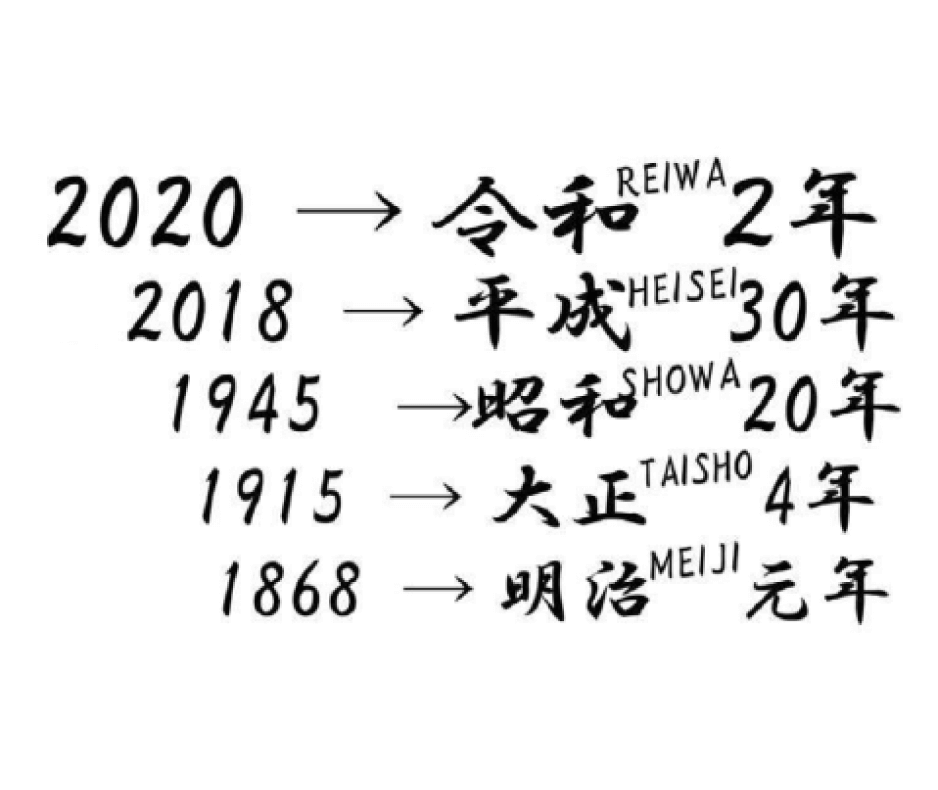
5. Driver's License Variations
In Japan, different cities and regions may issue variations of driver's licenses. Japanese driver's licenses come in three types, each with distinct background colors representing the driver's record:
Green Stripe: Issued to new drivers.
Blue Background: For regular drivers.
Gold Stripe: Awarded to drivers with a clean record over the past five years.
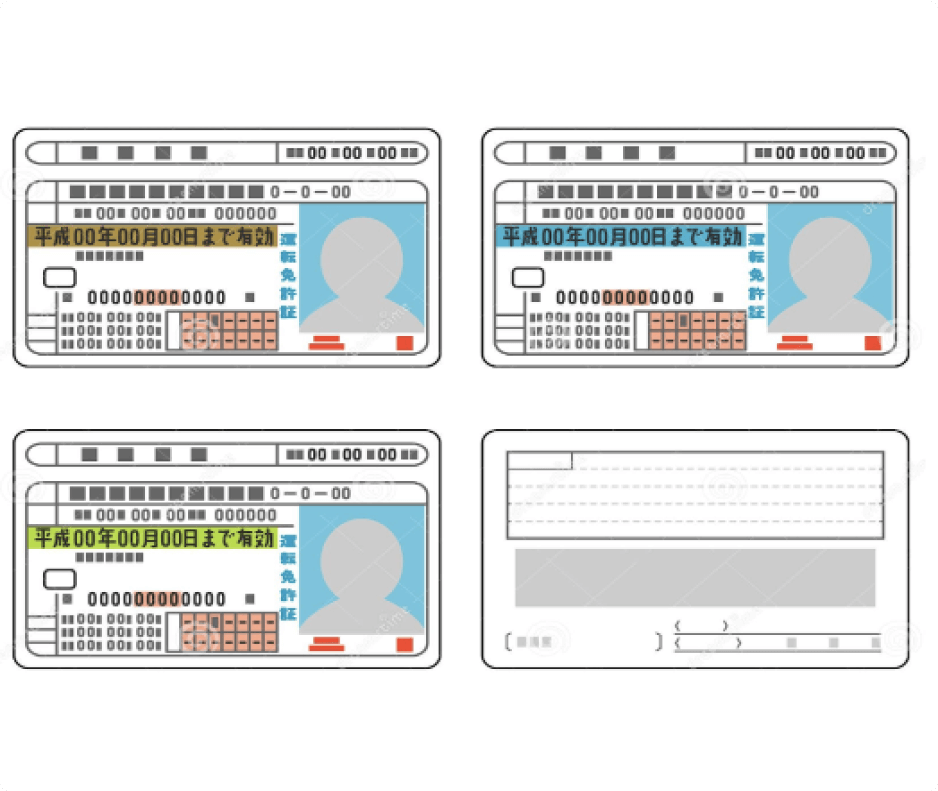
6. Complex Naming Structure
In Japan, the traditional naming structure is notably different from Western conventions, presenting unique challenges for identity verification systems. Japanese names typically include this format:
Surname (Last Name)
Position: The surname comes first in Japanese names and is considered the most important part of the name.
Examples: "Yamada," "Tanaka."
Given Name (First Name)
Position: The given name follows the surname and is used in more personal contexts.
Examples: "Taro," "Yuki."
Middle Name
Convention: Traditionally, Japanese names do not include a middle name. It is typically considered part of the given name when it is present.
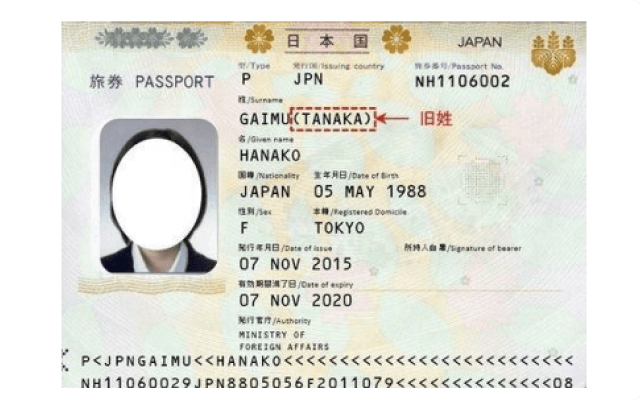
A Merchant’s Guide to Identity Verification in Japan
In Japan, merchants need help with verifying identity documents such as ID cards, passports, and driver's licenses. To simplify the process and support merchants during integration, Shufti offers two Verification Modes: Onsite Verification Mode and Offsite Verification Mode. These modes allow merchants to choose the best approach based on their specific use cases and requirements. Each category comes with its own set of considerations, including the type of document being verified, the verification method, and the unique obstacles merchants might face along the way.
Download the Top 10 Most Difficult Countries for Identity Verification
Download full report1. Verification Modes
Onsite Verification
The Onsite verification process by Shufti offers an intuitive and direct interaction for end users through the sophisticated iFrame/Verify component. This user-centric approach enables individuals to seamlessly submit the required verification proofs, such as ID and Address Documents, etc while receiving real-time guidance to navigate the verification process effortlessly. Upon completion, the verification results are made readily available to clients through the comprehensive Back Office portal or can be conveniently delivered via an API response, providing flexible and efficient access to vital information.
Offsite Verification
The Offsite verification process by Shufti is characterized by its efficient and straightforward approach. In this, clients are responsible for gathering the necessary verification proofs/data from end users. This process streamlines the collection of essential data, enabling clients to submit it directly to Shufti effortlessly for verification. The verification results are conveniently accessible either via the comprehensive Back Office portal or can be readily retrieved through an API response. This flexibility ensures clients have efficient access to critical information.
2. Document Types Selection
In Japan, various identity documents serve different purposes and offer varying levels of security and verification capabilities. Here's a brief overview of some of the key identification documents and their features:
ID Card: Japanese documents that usually fall under the category of ID cards include:
My Number Card: These are widely used in Japan and are the most common form of identification. They are equipped with features like MRZ and sometimes RFID, making them reliable for verification.
Residence Card: This is an important document for foreign residents in Japan. The residence card contains an IC chip for secure data storage, allowing for reliable verification. The inclusion of advanced security features like holograms and microprinting helps ensure authenticity and reduce the risk of forgery.
Health Insurance Card: It is a common form of identification in Japan, used primarily in the healthcare system. While it lacks the advanced security features found in cards like the My Number Card, it still plays a key role in identity verification for medical services.
Driver's License: Driver's licenses are also commonly used and are often preferred for their extensive use in various sectors. They include necessary security features that align with Japan’s regulatory standards.
Passports: Passports are highly secure and contain multiple layers of verification, including biometric data, making them ideal for high-security verifications.
Credit/Debit Card: Credit/Debit cards are generally not recommended for identity verification due to their primary function as financial instruments rather than identification documents.
3. Document Type Preference
and Performance
Different types of Japanese identity documents yield varying success rates in verification
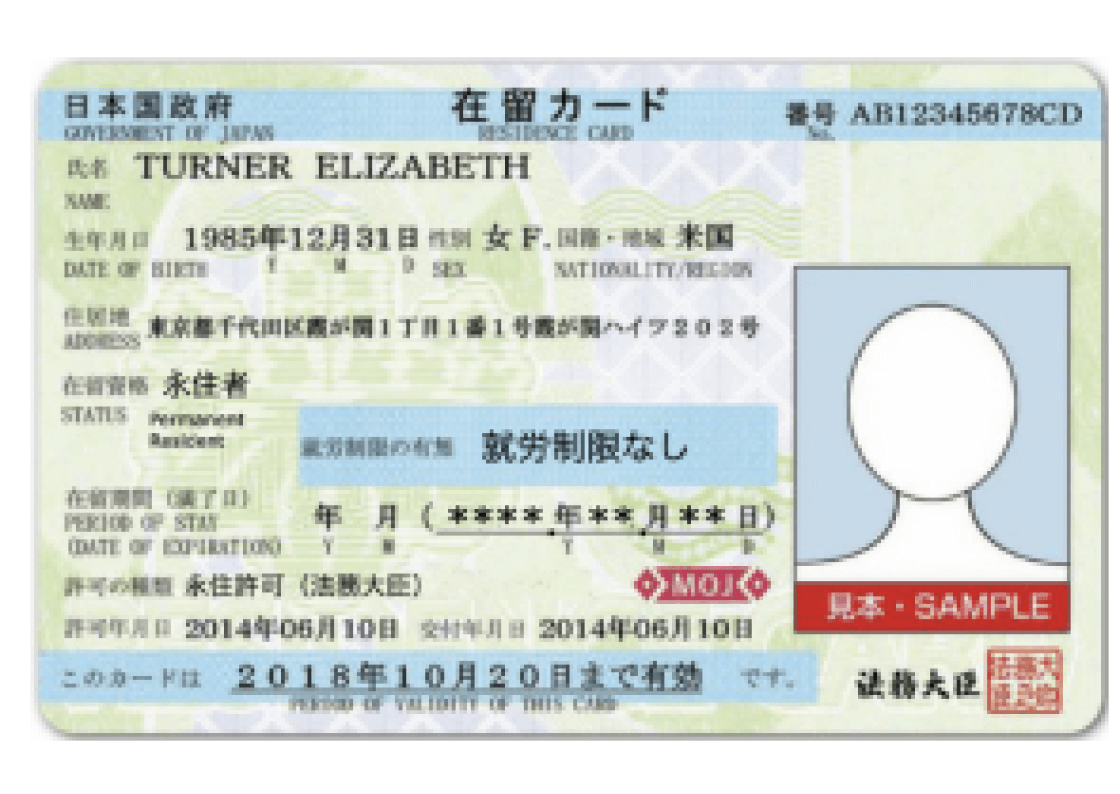
Resident Card
Resident Card’s clear, bilingual layout enhances OCR processing, allowing Shufti’s advanced features to provide superior reading and verification compared to competitors.
Extraction Parameters: Name, date of birth, issue date, document number, expiry date, address, nationality
Driver's License
Japanese driver's licenses are complex with varied features and regional differences. Shufti’s OCR technology is specifically tailored to handle these challenges, though extra processing time may be required.
Extraction Parameters: Name, date of birth, issue date, document number, expiry date, address
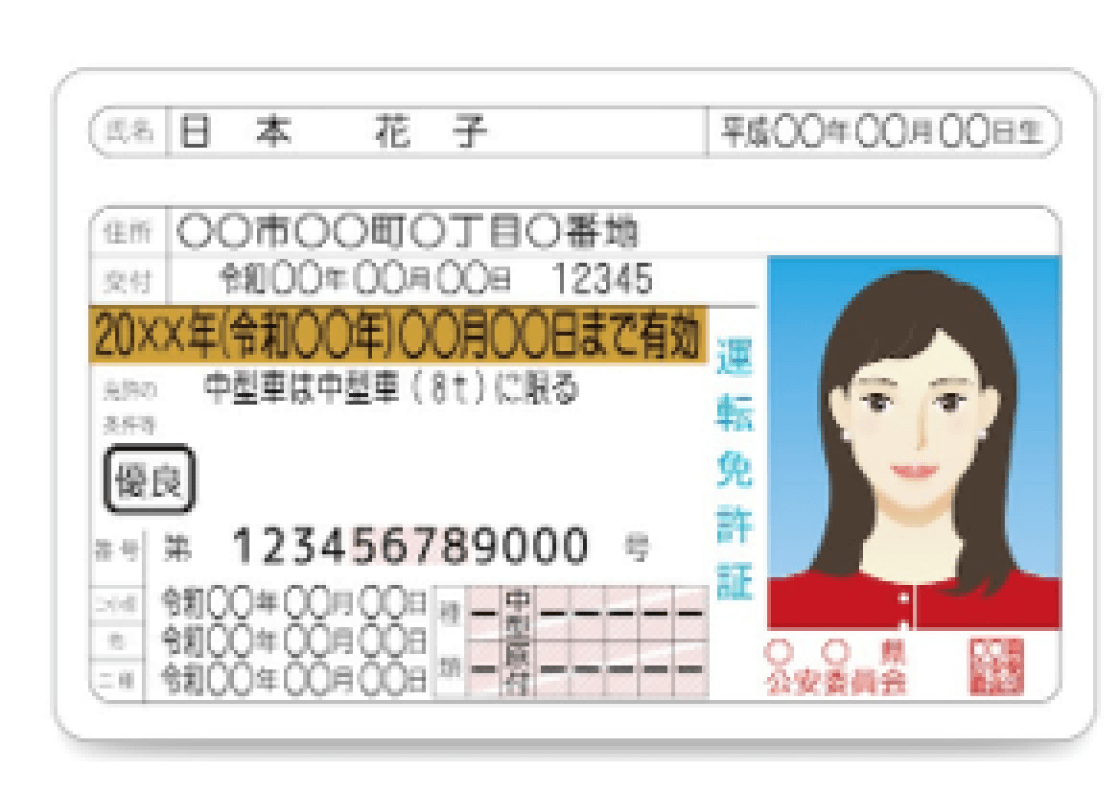
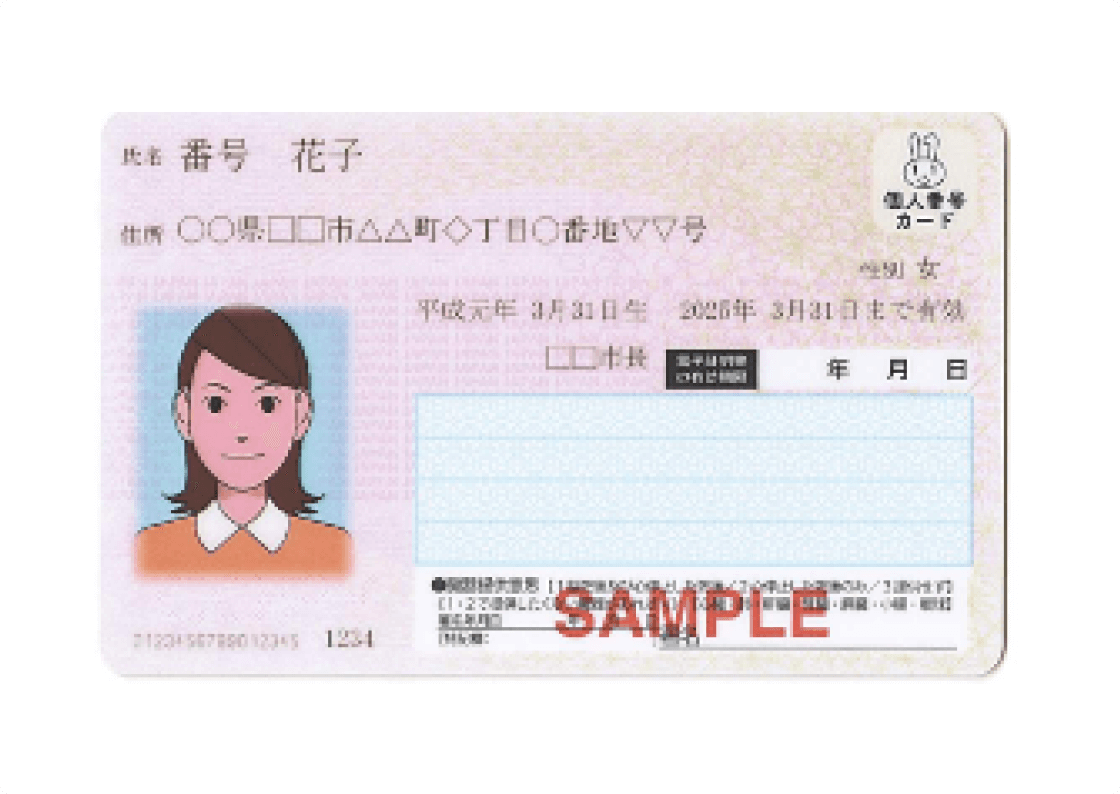
My Number Card
My Number Card, commonly used in Japan for administrative and financial tasks, is increasingly favored for identity verification. Shufti’s systems are optimized for it, providing fast and accurate verification.
Extraction Parameters: Name, date of birth, issue date, document number, expiry date, address
Health Insurance Card
HIC cards are often used for identity verification in non-financial sectors. Shufti’s OCR systems are trained to accurately process them, handling handwritten elements and regional variations effectively.
Extraction Parameters: Name, date of birth, issue date, document number, expiry date, address
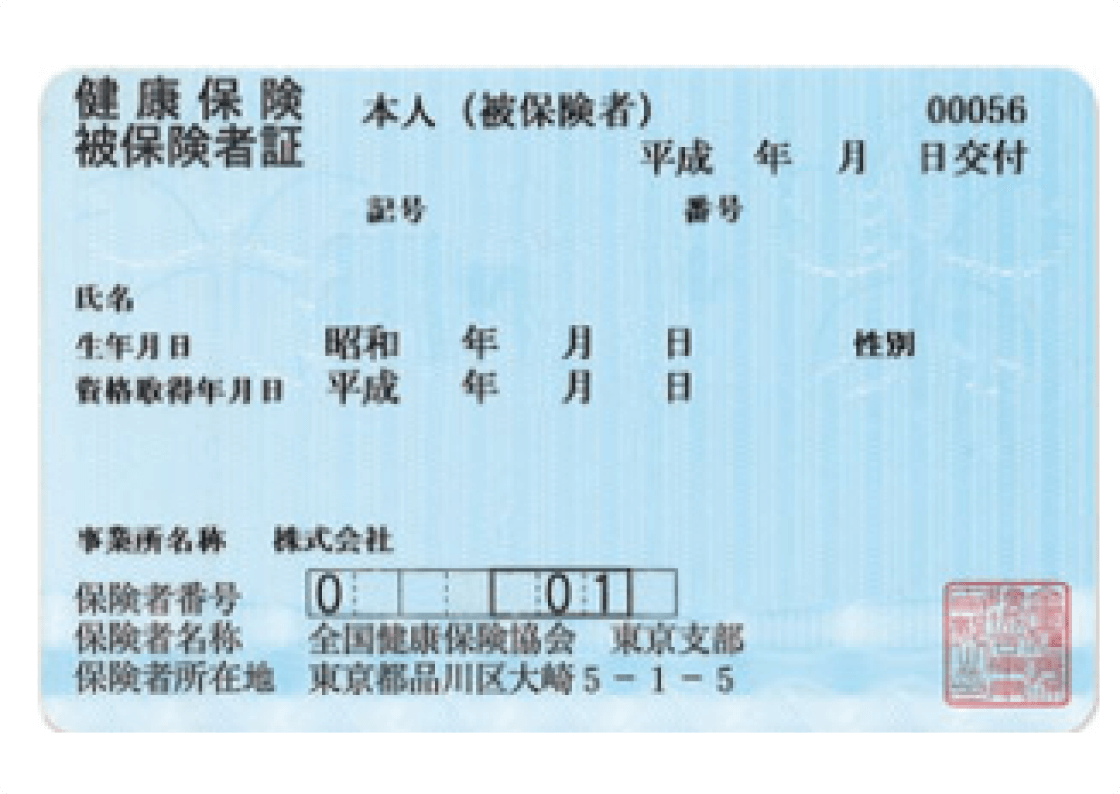
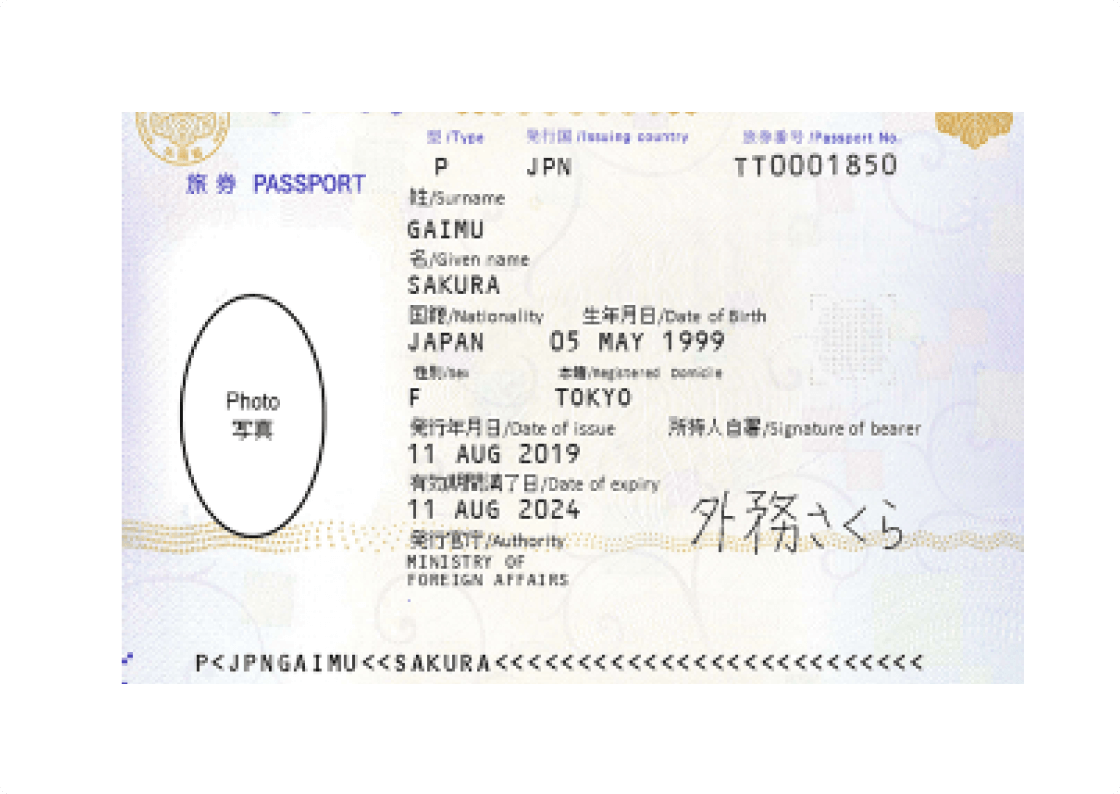
Passport
Japanese passports' complex security features, such as holograms and microtext, challenge OCR technology. Shufti’s advanced OCR systems are fine-tuned to accurately capture and verify all key details, ensuring fast and reliable processing.
Extraction Parameters:Name, date of birth, issue date, document number, expiry date, nationality, gender, place of issue, MRZ
4. Preferred Document for Identity Verification
As Shufti, we recognize the South African Smart ID card, passport, and driver's license as the preferred documents for identity verification in South Africa. The Smart ID card, with its advanced security features and standardized format, is the leading choice, while the Passport is an excellent alternative for international verification. The driver's license is also a good option for those without their Smart ID card. Our advanced OCR technology is optimized to handle the unique features of these documents, ensuring fast and accurate data extraction for secure identity verification.
Verification Settings
1. Verification Mode (Onsite vs. Offsite)
Onsite verification is preferred in South Africa for its higher accuracy and better control over the verification process. This is crucial in a market where document fraud can be a concern. Onsite methods leverage biometric and AI-driven technologies to ensure the authenticity and reliability of the verification process.
2. Data Extraction
Optical Character Recognition (OCR) is essential in South Africa to accurately extract data from identity documents, especially those issued in multiple languages like English and Portugese. Advanced OCR systems are required to handle the variations in text, security features, and regional formats. Additionally, OCR must efficiently process both old and new document types, such as Smart ID cards and green barcoded ID books, ensuring accurate data extraction across all formats.
3. Identity Document’s Backside Proof
In South Africa, while documents like the Smart ID card and driver's licenses often have essential details on the front side, the Smart ID card also contains important information such as the issue date and document number on the backside. To ensure a thorough verification process, merchants should enable the Backside Proof Required parameter. This ensures that all critical information is captured and verified, maintaining compliance with regulatory standards and preventing potential delays in the verification process.
4. Real-Time Proof Capture Vs. Proof Upload
South African identity documents can be verified through two flexible proof methods: real-time proof capture and proof upload, giving users the option to choose their preferred method based on convenience and accessibility.
Real-Time Proof Capture
With Shufti’s advanced auto-capture technology, capturing identity proofs in real-time ensures a smooth, efficient, and accurate verification process. This feature automatically detects the document and captures it without requiring user intervention, making it one of the fastest and most reliable options for verifying physical documents.
Proof Upload
Users also have the option to upload pre-captured images of the identity documents. The upload process is seamless, allowing documents to be verified hassle-free. This is ideal for users who already have pre-captured images of their identity documents and prefer a straightforward upload and verification process.
Merchants can enable Allow Online (real-time proof capture) and Allow Offline (proof upload) options available in the Verification setting tab. By offering both real-time capture and proof upload, Shufti ensures flexibility, providing the best user experience regardless of whether physical or electronic documents are being verified.
Download the Top 10 Most Difficult Countries for Identity Verification
Download full reportClick on a country to see the unique requirements that must be addressed.
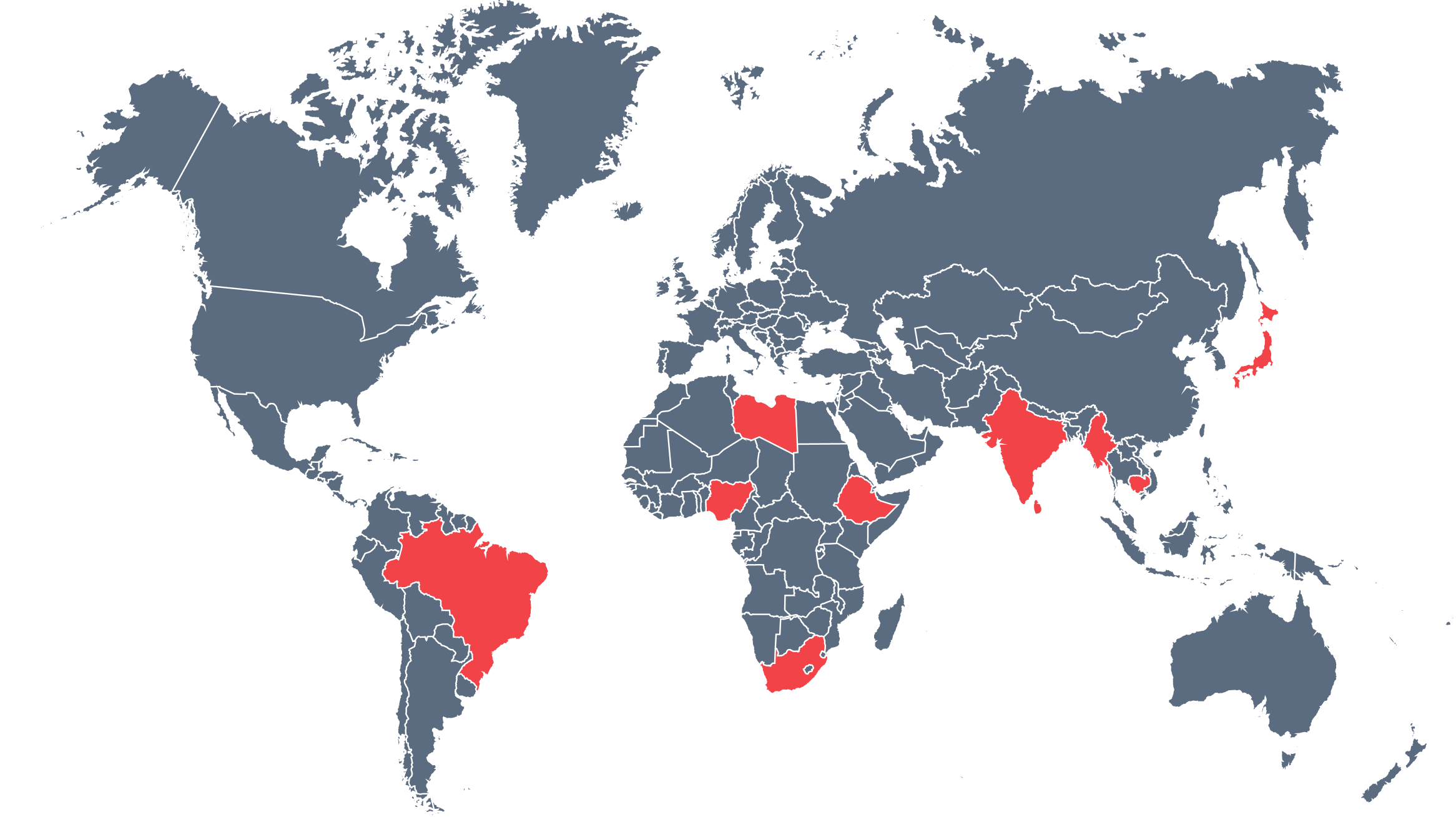

Brazil
Mastering Brazilian Identity Verification: A Merchant's Guide with Shufti
Effective identity verification in Brazil requires a deep understanding of the distinct features and challenges of Brazilian identity documents. Merchants must navigate different formats, languages, and security features to ensure reliable verification. This guide provides a comprehensive overview of Brazil's identity documents and the best practices for merchants engaging in identity verification.
Read Brazil’s Merchant Guide Book
Libya
Mastering Libyan Identity Verification: A Merchant's Guide with Shufti
Verifying identity documents in Libya presents unique challenges due to the country’s complex linguistic, social, and administrative structures. Implementing effective identity verification systems requires advanced technology to handle these specific hurdles. This guide explores the key challenges associated with verifying Libyan identity documents and how Shufti can help merchants overcome them.
Read Libyan’s Merchant Guide Book
Nigeria
Mastering Nigerian Identity Verification: A Merchant's Guide with Shufti
Nigeria’s identity verification systems are fraught with numerous complexities, arising from a combination of socio-cultural, infrastructural, and technological factors. As the country transitions towards digital identity solutions, recognizing and addressing these challenges is crucial for ensuring secure, accurate, and inclusive verification processes. Shufti’s OCR and verification technology is specifically designed to address these challenges and provide accurate, efficient, and reliable identity verification solutions.
Read Nigeria’s Merchant Guide BookMastering Indian Identity Verification: A Merchant's Guide with Shufti
Effective identity verification in India requires a comprehensive approach due to the distinct characteristics and complexities of Indian identity documents. Shufti’s OCR and verification technology is specifically designed to address these challenges and provide accurate, efficient, and reliable identity verification solutions.
Read Indian’s Merchant Guide Book
India

Ethiopia
Mastering Ethiopian Identity Verification: A Merchant's Guide with Shufti
Effective identity verification in Ethiopia requires a comprehensive approach due to the distinct characteristics and complexities of Ethiopian identity documents. Shufti’s OCR and verification technology is specifically designed to address these challenges and provide accurate, efficient, and reliable identity verification solutions.
Read Ethiopian’s Merchant Guide Book
South Africa
Mastering South African Identity Verification: A Merchant's Guide with Shufti
Effective identity verification in South Africa requires a deep understanding of the distinct features and challenges of South African identity documents. Shufti’s OCR and identity verification technology is optimized to handle these complexities:
Read South African’s MerchantGuide Book
Mastering Burmese Identity Verification: A Merchant's Guide with Shufti
Effective identity verification in Myanmar requires a thorough understanding of the unique characteristics of Burmese identity documents. Shufti’s OCR and identity verification systems are designed to address these challenges, ensuring high accuracy and compliance.
Read Burmese’s Merchant Guide Book
Myanmar
Mastering Cambodian Identity Verification: A Merchant's Guide with Shufti
Effective identity verification in Cambodia requires a comprehensive approach due to the distinct characteristics and complexities of Cambodian identity documents. Shufti’s OCR and verification technology is specifically designed to address these challenges and provide accurate, efficient, and reliable identity verification solutions.
Read Cambodia’s MerchantGuide Book

Cambodia
Mastering Sri Lankan Identity Verification: A Merchant's Guide with Shufti
This guide helps Sri Lankan merchants, institutions, and service providers understand identity verification challenges, emphasizing the importance of accurate verification in finance, telecommunications, and e-commerce. It stresses compliance with KYC and AML regulations to avoid penalties and loss of trust. Shufti’s advanced technology offers a solution with OCR, biometric verification, and document validation, handling Sinhala and Tamil scripts, complex diacritics, and Gregorian/Buddhist date conversions for accurate onsite and offsite verification.
Read Sri Lankan’s MerchantGuide Book

SriLanka
Mastering Japanese Identity Verification: A Merchant's Guide with Shufti
Effective identity verification in Japan requires a comprehensive approach due to the distinct characteristics and complexities of Japanese identity documents. Shufti’s OCR and verification technology is specifically designed to address these challenges and provide accurate, efficient, and reliable identity verification solutions.
Read Japanese’s MerchantGuide Book

Japan
Explore our ROI Calculator
Secure your business, achieve compliance, and accelerate growth effortlessly with our cutting-edge digital identity verification solution
ROI CalculatorGet the Shufti newsletter
Stay ahead of the curve with fresh takes on the latest identity innovations.
Take the next steps to better security.
Contact us
Get in touch with our experts. We'll help you find the perfect solution for your compliance and security needs.
Contact us

